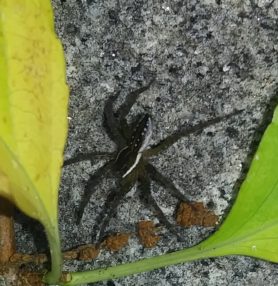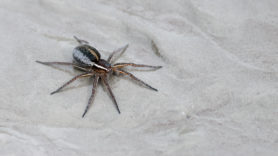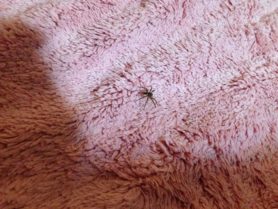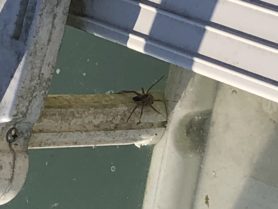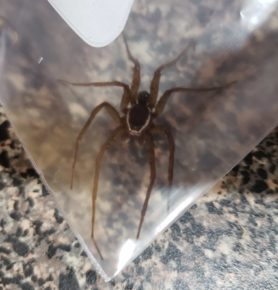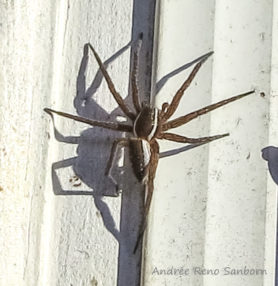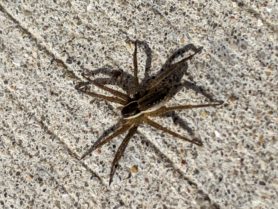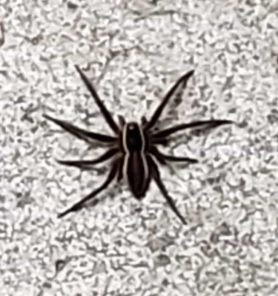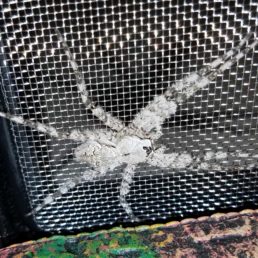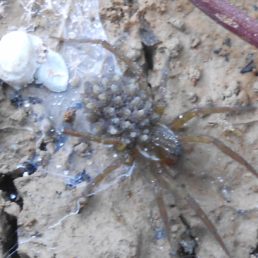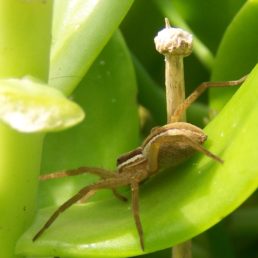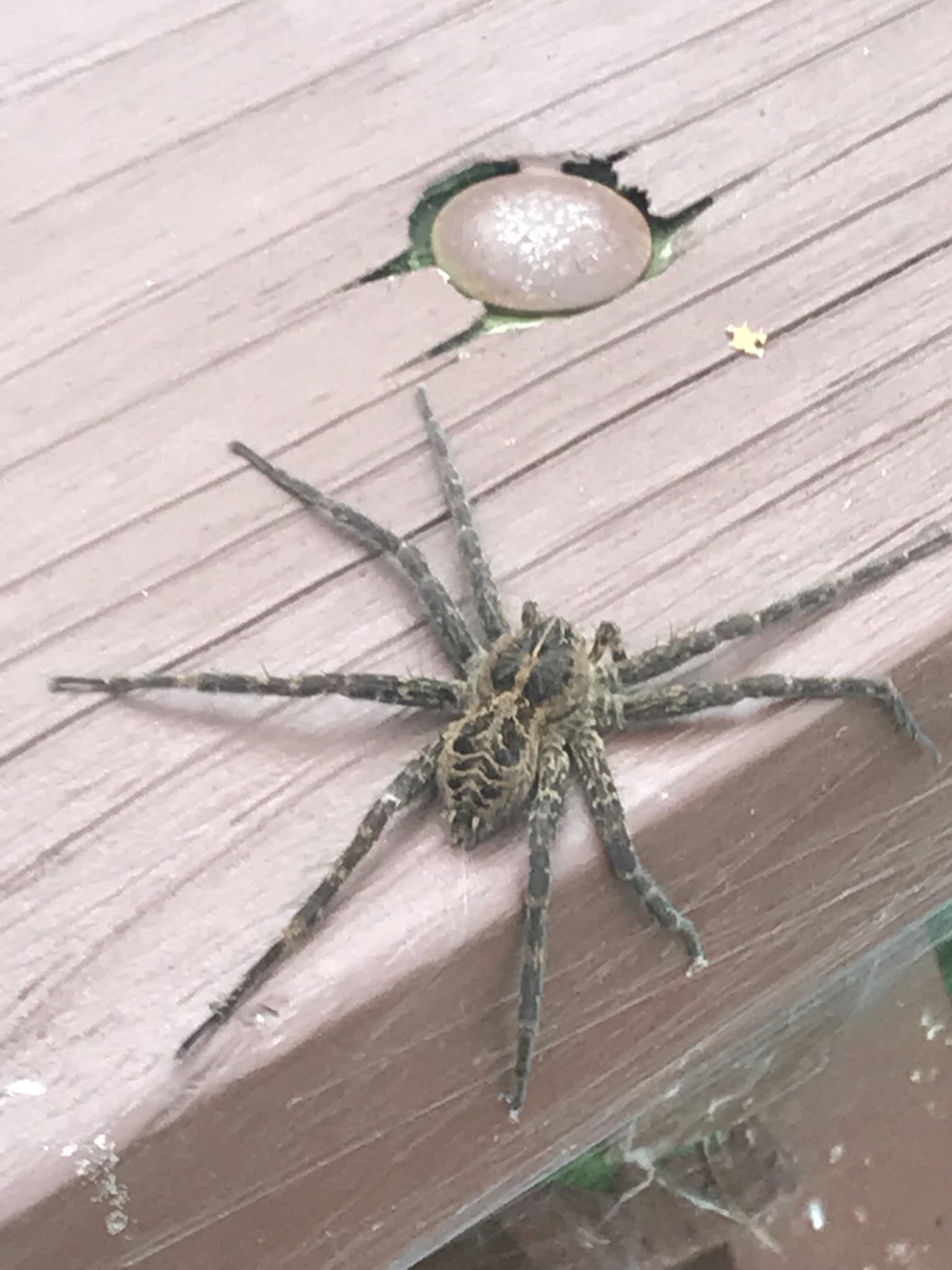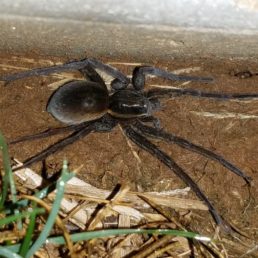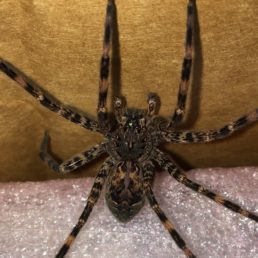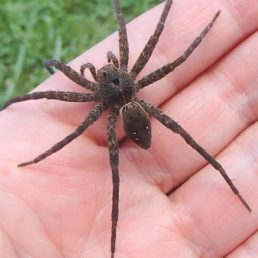Taxonomic Hierarchy
- Kingdom: Animalia
- Phylum: Arthropoda
- Class: Arachnida
- Order: Araneae
- Suborder: Araneomorphae
- Family: Pisauridae
- Genus: Dolomedes
- Species: Dolomedes triton
Common Name (AAS )
)
Six-spotted Fishing Spider
Other Common Names
Nursery Web Spider, Raft Spider, Dock Spider, Fishing Spider
Author
Charles Athanase Walckenaer, 1837
Primary Colors
Sightings Overview
There have been 26 confirmed sightings of Dolomedes triton (Six-spotted Fishing Spider), with the most recent sighting submitted on September 27, 2019 by Spider ID member tangledweb. The detailed statistics below may not utilize the complete dataset of 26 sightings because of certain Dolomedes triton sightings reporting incomplete data.
- Web: 8% of the time, Dolomedes triton spiders are sighted in a spider web (Sample size: 26)
- Sex: 0 female and 1 male.
- Environment: Dolomedes triton has been sighted 27 times outdoors, and 6 times indoors.
- Outdoors: Man-made structure (9). On flower (1). Low foliage (1). High foliage (1). Ground layer (3). Under rock or debris (1). Freshwater river, lake, stream (9). Open field, pasture, grassland (1). Forest (1).
Location and Range
Dolomedes triton (Six-spotted Fishing Spider) has been sighted in the following countries: United States.
Dolomedes triton has also been sighted in the following states: Alabama, Alaska, Florida, Louisiana, Massachusetts, Michigan, New Hampshire, New Jersey, North Carolina, South Carolina, Texas, Vermont, Wisconsin.
Seasonality
Dolomedes triton has been primarily sighted during the month of May.
- January:
- February: 2
- March: 1
- April: 7
- May: 10
- June: 3
- July:
- August:
- September: 1
- October: 1
- November:
- December: 1
Additional Remarks
- Though people sometimes assume the common name, “Six-spotted Fishing Spider,” must have something to do with the white spots on the abdomen of the spider, it does not; it actually refers to the six dark spots on the spider’s sternum.
- This species looks very similar to the European species, Dolomedes fimbriatus.
- This spider can dive below the surface of the water when escaping predators or trying to catch food. They can stay underwater for up to an hour. Feeds on prey as large as minnows and frogs, etc.
- Deshefy (1981) and others (e.g. Suter 1999) have described “sailing” by this spider, whereby it takes advantage of the wind and their nearly frictionless interaction with the water surface in order to sail around. Like other fishing spiders, they also actively propel themselves across the water surface by rowing and galloping.
- Egg sac is a brown sphere, around 8-10mm in diameter, and held in the jaws of the mother spider as she wanders around. She hangs it amid a “nursery web” once the babies are ready to emerge.
- Sometimes found floating on the surface of swimming pools in urban situations.
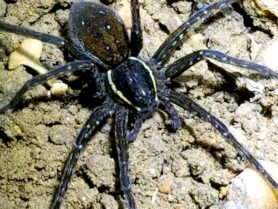 The spider species Dolomedes triton, commonly known as Six-spotted Fishing Spider, belongs to the genus Dolomedes, in the family Pisauridae. Dolomedes triton spiders have been sighted
The spider species Dolomedes triton, commonly known as Six-spotted Fishing Spider, belongs to the genus Dolomedes, in the family Pisauridae. Dolomedes triton spiders have been sighted 